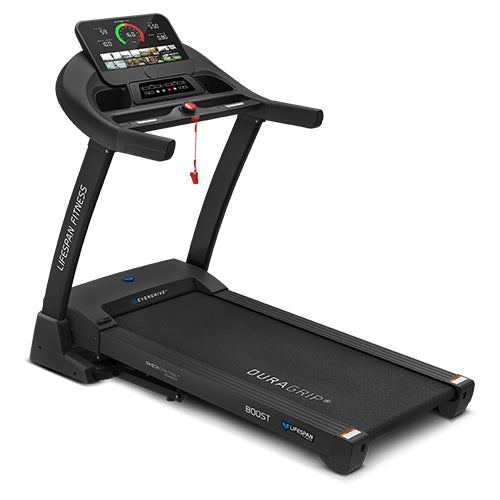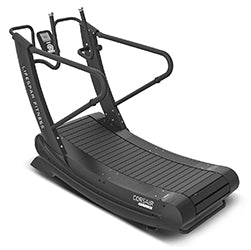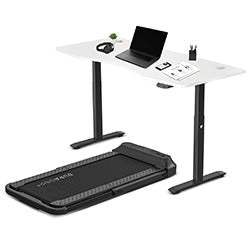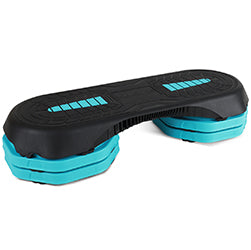

Both rowing machines and treadmills are popular choices for fitness enthusiasts, each offering unique benefits suited to different fitness goals. Deciding which is better depends on what you aim to achieve from your workouts.
Treadmills have enjoyed a long-lasting popularity as most people's go-to choice for their home fitness setup. But the rowing machine is slowly and surely taking over as the preferred option for the home gym. As such, it's natural to stop and wonder which one is right for you.
Rowing machines and treadmills each offer unique benefits. Rowing machines provide a full-body, low-impact workout, engaging multiple muscle groups effectively. Treadmills, on the other hand, are intuitive to use and versatile, accommodating walking, jogging and running workouts that pretty much anyone can do.
Both can improve cardiovascular fitness and burn calories, and both are great additions to your home gym. But which should you choose?
Read on to discover the benefits of each to make the right decision for your workout.
Benefits of Rowing machines

Rowing machines offer a full-body workout, engaging major muscle groups such as the legs, core, back and arms, making them an efficient tool for comprehensive fitness. They are low impact, making them suitable for people with joint issues or those recovering from injuries. Regular rowing can significantly improve cardiovascular health by boosting heart rate and lung capacity. Rowing effectively burns calories, with an estimated burn of 300 to 600 calories per hour, aiding in weight loss. The customisable resistance, available in both magnetic and water-based rowing machines, allows users to tailor the intensity of their workouts to their fitness levels.
Benefits of Treadmills

Treadmills are widely popular due to their ease of use and intuitive design, making them accessible for users of all fitness levels. They are excellent for improving cardiovascular fitness by enabling consistent and controlled aerobic exercise, which enhances heart health and increases lung capacity. Treadmills offer versatility, allowing users to switch between running, jogging and walking, catering to various workout preferences and intensities. This versatility makes it easier to customise workouts based on individual fitness goals.
Calorie burn on treadmills is significant, with running burning approximately 600 to 1200 calories per hour, depending on speed and intensity. This makes treadmills effective tools for weight loss and management. The customisable speed and incline features on treadmills enable users to simulate different terrains and adjust the intensity of their workouts, adding variety and challenge to their routines.
Drawbacks of Rowing Machines
While rowing machines offer many benefits, they also come with certain drawbacks that potential users should consider. One significant downside is the requirement for proper technique. Using a rowing machine effectively demands a precise form to avoid injuries and maximise workout benefits. Incorrect technique can lead to strain on the back, shoulders or knees, potentially causing long-term issues. Therefore, beginners might need guidance or instruction to learn the correct rowing form, which could be a barrier for some. Remember, we have our own guide on rowing machine technique.
Another drawback is that rowing can become repetitive over time. The motion involved in rowing is highly repetitive, which may lead to boredom for some users. Unlike treadmills, which allow for variations such as walking, jogging and running with adjustable speed and incline, rowing primarily involves the same continuous motion. This lack of variety might make it challenging to maintain motivation and enthusiasm for regular workouts. Consequently, users might find it harder to stick to a consistent exercise routine if they do not mix their rowing sessions with other forms of physical activity.
Drawbacks of Treadmills
Despite their popularity and benefits, treadmills also have certain drawbacks that users should be aware of. One major issue is the greater impact on joints. Running or jogging on a treadmill exerts significant pressure on the knees, ankles and hips, which can lead to joint pain or aggravate existing conditions. Over time, this repetitive high-impact activity can contribute to joint wear and tear, potentially resulting in injuries or chronic joint issues. If you have arthritis or other joint concerns, this aspect can be particularly problematic, making low-impact alternatives like rowing machines more appealing.
Another drawback of treadmills is their size and bulkiness. Treadmills tend to be large, heavy and require a substantial amount of floor space, which can be a challenge in smaller homes or apartments. Even foldable models can still be cumbersome to move and store. This bulkiness not only limits where the treadmill can be placed but also makes it less portable compared to other fitness equipment. The noise generated by treadmills during use can also be disruptive, especially in shared living spaces or apartments with thin walls.
Considering these drawbacks, potential buyers should evaluate their space constraints and joint health before investing in a treadmill.
Choosing the best machine

Selecting between a rowing machine and a treadmill depends on your individual fitness goals and space. If your primary goal is a full-body workout that targets multiple muscle groups and offers low-impact exercise, a rowing machine is an excellent choice. It is ideal for improving overall strength and cardiovascular fitness without putting excessive strain on your joints. On the other hand, if you prefer a versatile cardio workout that allows for walking, jogging and running, a treadmill might be more suitable. Treadmills are particularly effective for those looking to improve running endurance and burn a significant number of calories.
Space concerns are also crucial when choosing the right machine. While both rowing machines and treadmills can be bulky, there are compact options available for both. For instance, if you are short on space, consider looking into small treadmills that fit any space and budget. Similarly, many rowing machines are designed to be foldable and easy to store, making them a viable option for tight living spaces.
By considering your fitness objectives and evaluating the available space, you can choose the machine that best fits your lifestyle and exercise preferences.
Conclusion

Lifespan Fitness offers a wide range of both rowing machines and treadmills to suit various fitness goals and space requirements. Whether you seek a full-body, low-impact workout with a rowing machine or prefer the versatility and cardio benefits of a treadmill, there are options available to meet your needs. For personalised advice or further information on selecting the best fitness equipment for your lifestyle, feel free to reach out to our team. We're here to help you achieve your fitness goals with the right tools and support.
















































